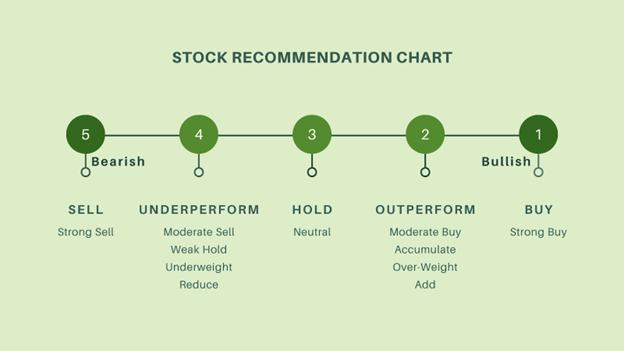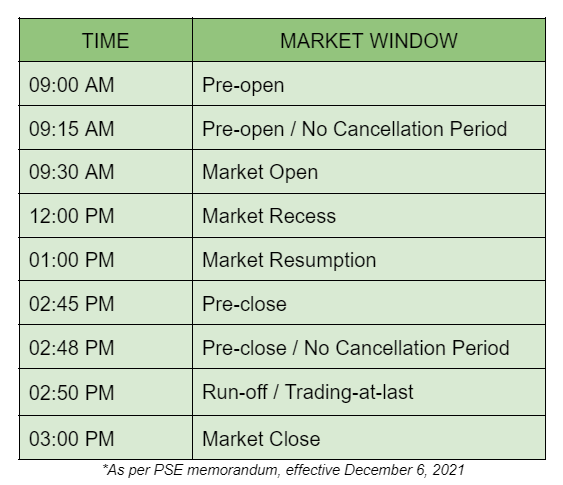No products in the cart.
Financial, Financial Literacy
Buy, Sell, and Hold – An Introduction

Buy, sell and hold. Stock trading might sound fascinating, challenging, and perplexing all at once. But it’s not necessary to be. The fundamentals of how a stock market operates determine when to purchase and sell stocks. Buy low and sell high is the concept; if you purchase a stock for Php 50 and sell it for Php 60, you will have made a profit.
The first thing to understand is that there are numerous stock markets and exchanges worldwide where people can buy and sell stocks or shares of a firm.
Many people purchase and sell equities on stock exchanges at varying prices because they have various opinions about the worth of those stocks. Any stock could experience a short-term up or down day for several reasons. The stock’s underlying business may be unsound, and the company will go bankrupt. Alternatively, a report from an analyst, a rumor about upcoming corporate activities, or general economic news could all affect the stock price. A stock may be predicted to rise by one investor while fall by another. So, whose timing for stock purchases is correct?
Due to the high level of volatility, it can be risky for individual investors to purchase and sell stocks to earn a profit. As a result, many investors like assets like mutual funds, ETFs, and index funds that comprise various companies in one convenient package. Remember that past success does not guarantee future success.
Mins to Read: 10 minutes

“Buy when everyone else is selling and hold until everyone else is buying. That’s not just a catchy slogan. It’s the very essence of successful investing,” J. Paul Getty once said.
In the stock market, when everyone sells a certain kind of stock, it usually signifies that it is moving for a low price; Getty advises purchasing at this time. The waiting after that is nonetheless something to be aware of. Don’t immediately turn around and sell; be patient and wait for the right opportunity. The idea is that we should maintain composure in the stock market.
Diversify, start small, concentrate on overall investing, and have long-term goals are some ideas for anyone wishing to start investing to be aware of. The most crucial thing is understanding when to buy, sell, and hold.
1. Mapping the Basics
a. Defining Buy, Sell, and Hold
Stock analysts define their evaluations in various ways. The straightforward terms buy, sell, and hold are frequently used.
To keep things straight, many analysts merely provide buy, hold, or sell ratings:
- A buy rating suggests purchasing the stock.
- A sell rating indicates that the stock should be sold or shorted.
- A hold rating is neutral. The stock has no incentive to be purchased, and if you already hold it, there is no compelling motive to sell it.
However, different terminology is employed by several analysts to characterize their evaluations, making it difficult to understand what they mean.
What distinguishes, for instance, a rating of “buy” from one of “outperform”? Or a rating of “sell” and “underperform”?
All the rating words can be categorized into five broad groups to make things easier:
- Buy: A buy rating, sometimes referred to as a “strong buy,” is upbeat and suggests that the stock is likely to perform strongly.
- Outperform: This is a modest buy recommendation that suggests the stock is anticipated to have more significant returns than the general stock market. Outperform is also known as “overweight” or “moderate-buy.”
- Hold: A hold rating is a neutral assessment frequently referred to as “market perform” or “equal weight,” and it states that there are no compelling reasons to buy the stock and none to sell it.
- Underperform: The company is projected to perform marginally worse than the market if it has an underperforming rating, often known as “underweight” or “moderate sell.”
- Sell: Also known as a “strong sell,” this rating is uncommon and is typically only given if the analyst has a negative outlook for the stock. According to this rating, the stock ought to be sold or possibly shorted.

b. PSE Trading Schedule
The Philippine Stock Exchange (PSE) is open Monday through Friday throughout the week and closed on weekends and select holidays.
You should know daily market windows, even though stocks can be purchased and sold during market hours.
The many trading windows for the daily market are broken down below:

Pre-open
The pre-open period includes two periods:
09:00 AM – 09:14 AM – Trading partners (TPs) can enter, change, or cancel orders during this time; the pre-opening algorithm will be used to process them. During this time, no matching orders can occur.
09:15 AM – 09:30 AM – During this time, trading partners may place orders, but they cannot change or cancel them.
Market Open / Continuous Trading
09:30 AM – 11:59 AM – Market open: During the market open, all stocks’ opening prices are determined, the order book is frozen, and trading partners are not permitted to place, modify, or cancel orders. Continuous trading: Per PSE trading regulations, orders are immediately matched at the best price.
Market Recess
12:00 PM – 01:29 PM – Trading partners cannot place, change, or cancel orders when the market is closed. Trading of all securities is also suspended during this time.
Trading Resumes / Continuous Trading
01:00 PM – 02:44 PM: Orders are automatically matched at the best price per PSE trading rules throughout the afternoon session, just like in the morning.
Pre-close
The pre-close period includes two periods:
02:45 PM – 02:47 PM: Trading partners can place, change, or cancel orders during the pre-close period.
02:48 PM – 02:49 PM: During this time, trading partners may place orders, but they cannot change or cancel them.
Run-off / Trading-at-last
02:50 PM – 03:00 PM: Trading partners may place limit orders at the closing price alone or market orders during the run-off/trading-at-last period, but matching is only carried out for both order types at the closing price.
Market close
03:00 PM: Stock trading has ceased, and the market is closed. Although order matching does not occur, some brokers might allow after-hours orders to be processed the following trading day.
2. When to Buy
When is the best time to buy? Since stock prices are typically the most volatile at the beginning of the trading day, you might want to aim for that time.
It can be challenging to predict when exactly is the best time to purchase or sell a stock with a sharp price fluctuation if you’re a novice or don’t do the proper research. More experienced investors will probably get better grasp of trends and the best times to buy and sell particular companies’ stocks.
Examining past performance can be helpful when determining the optimum months to buy stocks. Here’s a list of when to consider buying:
a. A stock goes on sale.
Consumers are constantly in search of a bargain when shopping. Christmas, Cyber Monday, and Black Friday are three occasions when low prices stoke rabid consumer demand.
Investors might decide if the shares are on sale if stock prices are oversold. Consider setting a price range within which you would purchase discounted stocks. Look into statistics and analyst reports to assist you in deciding the price range at which to make a buy.
b. Undervalued stocks.
If you buy inexpensive stocks, you might also get a reasonable price. You must decide on a price range within which you would acquire such shares. Establishing a price range will assist you in determining a company’s chances of growth and profitability.
A discounted cash flow (DCF) analysis can be used to examine a company’s predicted future cash flows, which can then be subtracted from the present using a risk factor. These discounted cash flows added together can aid in determining a pricing range.
c. You’ve done your research.
Purchasing stocks at a discount or when they are undervalued may be alluring. But it’s best to do your homework and research before you buy something.
You can get started by reading the most recent market news releases, evaluating corporate reports, and subscribing to financial publications. Before joining the market, make sure to develop your analytical capabilities as well.
3. When to Sell
An investor can select a price range for when they want to sell a stock, just as they do when they want to buy a stock. It pays to keep track of the value of the stock; when the valuation no longer supports the asking price, it might be time to sell.
You should keep your stock for a period after purchasing it. It could take a few years to achieve its fair value. Of course, there is always a chance it won’t ever reach the valuation the investor believes is appropriate.
If you have stock market investments, you are subject to a particular set of regulations. Market volatility in the near term shouldn’t be an excuse to sell since you’re in it for the long haul.
What should motivate you to sell your stock holdings, then? Here’s a list of three reasons:
a. You achieve your desired price.
Never invest without a clear financial objective, precisely a target sum. Let’s imagine you wish to spend Php 1,000,000 on a car. You only have Php 500,000 right now. You, therefore, choose to put that money into the stock market. It’s time to sell when the worth of your portfolio reaches Php 1,000,000 (or the amount needed to purchase the car you want).
Many investors don’t know when to sell their stock holdings since they don’t have a specific financial objective in mind. Having one facilitates selling decisions.
b. The business is in decline.
In the 1990s, Nokia dominated the mobile phone market and was a reliable investment on the New York Stock Exchange. However, as the new millennium arrived, the corporation could not maintain its position as a market leader as other brands dominated. People started gravitating for Android, iPhone, and Blackberry phones. If you owned Nokia stock at the time, that is unquestionably a hint that you should sell your holdings.
Have your cut-loss early on. Simply put, let go of the losing stocks and concentrate on the ones performing well. Examine the business: Is it expanding or contracting? Sell those shares if the company’s future appears grim before the price drops sharply.
c. A better investment was discovered.
Never let your assets enchant you. You might not have the money to purchase another stock after investing in one. An investor would therefore want to assess each investment choice to see if their money could be better off elsewhere. It might be time to reinvest those funds elsewhere if you locate a better one or if the company’s fundamentals are deteriorating. But of course, don’t make a hurried choice. Before doing so, conduct research and analysis.
4. When to Hold
A “hold” is typically a recommendation from an expert not to sell or buy stocks. A company is generally expected to perform in line with the market or at a comparable rate to peer companies when recommended to hold. This rating is thought to be superior to sell but not superior to buy. This indicates that investors who already own long holdings should refrain from selling, but new investors with no positions should refrain from buying.
Doing your research using price targets from analysts or newsletter recommendations is a wonderful start. Still, excellent investors perform their research and due diligence before purchasing a company’s stock.
Reading an organization’s annual report, keeping up with its most recent press releases, and checking out some of its recent investor presentations or appearances at trade events online are all examples of conducting research. All this information is conveniently available on a company’s corporate website on the investor relations page.
If you’ve done your research, determined a stock’s price objective accurately, and determined if it is overvalued or undervalued, don’t expect the stock you just acquired to increase in value immediately. Be tolerant. A stock may take some time to trade up to its true worth. Analysts who forecast prices for the upcoming month or even the upcoming quarter are merely making a wild guess about how quickly the stock will increase in value.
It may take a stock several years to increase in value to a certain price range. Even better would be to consider keeping stock for three to five years, mainly if you are confident in its potential for growth.
Also a good read!
Investments and Finance Ultimate Guide
Your Ultimate Access to Kuwait Directories in this COVID-19 Crisis
OFW FINANCE – Money News Update that you need to read (Table of Contents)
2023 Your Practical Wedding Guide
Credit Card Starter Guide for Beginners
Essentials Before Applying For a Credit Card
Invest Early – The Younger, The Better
Stock Investment A Beginner’s Guide
If you like this article please share and love my page DIARYNIGRACIA PAGE Questions, suggestions send me at diarynigracia @ gmail (dot) com
You may also follow my Instagram account featuring microliterature #microlit. For more of my artworks, visit DIARYNIGRACIA INSTAGRAM


Peace and love to you.